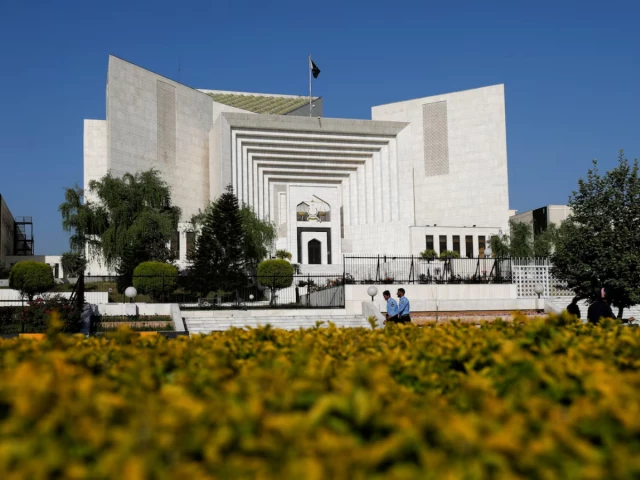Supreme Court proposes tougher penalties for unregistered marriages in report Redefining Access to Justice 2025
Police officers walk past the Supreme Court of Pakistan building, in Islamabad, Pakistan April 6, 2022. REUTERS
The Supreme Court has introduced key family law reforms, including revising the Nikah Nama to include a section relating to dowry sections and proposing stricter penalties for unregistered marriages, as part of its broader judicial reform agenda detailed in its Redefining Access to Justice 2025 report.
As part of family law reforms, the apex court has recommended clearly defining key terms such as ‘alimony’ and ‘dowry’ in the Muslim Family Law Ordinance (MFLO), 1961 to remove ambiguities that often lead to inconsistent judgments in family courts. The reforms also propose enhanced penalties for unregistered marriages to strengthen legal protections for women and ensure accountability in matrimonial matters.
The report further suggests allowing transfer of family law cases to the Islamabad Capital Territory (ICT) to streamline procedures and improve case management across jurisdictions.
The Redefining Access to Justice 2025 report highlights that family law reforms are part of an inclusive law reform process involving senior lawyers, judges and the Law Reform Advisory Committee, which is leading multiple law modernization initiatives.
Along with legal reforms, the Supreme Court has also prioritized digital transformation to improve transparency and public accessibility. More than 16,000 e-filings, 7,200 e-affidavits and more than 24,000 certified copies were processed electronically into the dockets, while 54,473 judgments were digitized for archival purposes with QR code authentication and NADRA integration for verified credentials.
A national judicial information dashboard now tracks cases in real time, and a public facilitation system, including an online feedback portal, an anti-corruption hotline and information centers, has been launched to strengthen citizen engagement.
Through these judicial and digital reforms, the Supreme Court aims to build a judicial system that is transparent, accessible and adapted to contemporary social realities.




